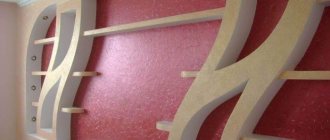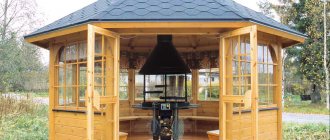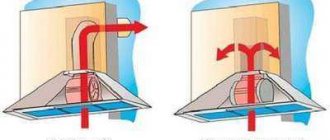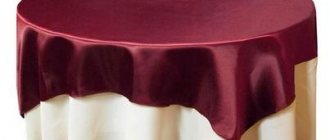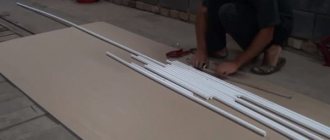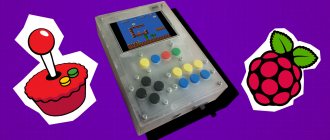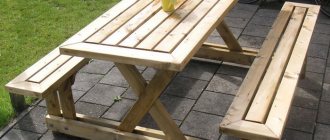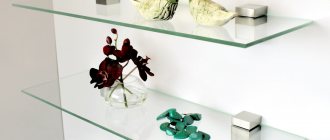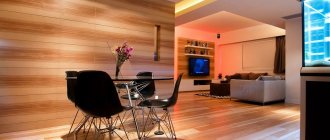Skinali are decorative panels for wall decoration. The design, made of glass, fits perfectly into the interior and can withstand not only the consequences of cooking, but also accidental impacts.
From this article you will learn about the pros and cons of glass construction, as well as how to make and install kitchen skins with your own hands.
Advantages and disadvantages of glass aprons
Pros:
+ Wear resistance. Glass is impervious to moisture and grease.
+ Fire resistance and fire safety. Glass skinals can withstand up to +120 °C.
+ Hygiene. The seamless panel is easy to keep clean. Fungus does not grow on its surface.
+ Environmental friendliness. The skinals are made of glass, which contains quartz sand and silicon - materials of natural origin. They are safe for the human body because they do not emit toxic fumes.
+ Decorative. You can choose the design of your skins yourself so that they perfectly complement the kitchen interior.
+ Durability. If you keep the panel clean and wash it regularly, it will last more than 20 years.
Minuses:
— Additional holes cannot be made in the glass panel.
— Illiterate installation will lead to condensation and cracks on the skin.
— Such panels need to be washed often and wiped thoroughly to avoid streaks.
Materials for making skins and the requirements for them
Kitchen skins are made from reliable and durable materials with the following properties:
- resistance to moisture and chemical, sometimes quite aggressive detergents;
- resistance to high temperatures;
- lack of adhesion to dyes and fat;
- ease of care;
- long service life;
- high hygiene, ability not to absorb odors.
All of the above properties are possessed by glass panels, from which a wide variety of skinals are produced, presented on the modern market.
They are incredibly beautiful, look very impressive and are able to satisfy the requirements of even the most demanding clients.
What types of kitchen skins exist?
A glass apron can be designed in different ways. The following main options are distinguished:
- transparent. Classic glass aprons that reliably protect the wall from dirt;
- matte. Sandblasting is used to apply designs on them. The image “drawn” by the air stream will remain on the glass for a long time;
- mirrored Visually increase the space. An excellent choice for a small kitchen;
- with painting. A drawing made to order by an artist or personally by you will decorate the kitchen;
- with photo printing. Such skins are distinguished by their depth of color and realistic image;
- with backlight. LEDs hidden behind the panel will create additional lighting and a unique interior.
Features of the skin
The advantages of the skin are obvious. As soon as designers began to use a glass apron in the kitchen interior, most housewives immediately drew attention to its beauty and functionality.
- Skinali transforms the kitchen into a beautiful and very modern space.
- Skinali makes the room spacious and bright due to the lighting.
- The housewife receives a protected work surface that is easy to clean.
A glass apron allows you not only to experiment with the interior, but also to change it. The wall panel can be easily removed and replaced with another, thereby achieving the appropriate aesthetics. The room always looks neat, and the design pleases with its novelty. Such efficiency is achieved due to the quality and installation features of the skin.
The quality of the apron is determined by its strength, because tempered glass is the main material for the production of the apron. Glass does not scratch, is not afraid of mechanical damage, and to break it, you need to apply a lot of force. The thickness of the glass is from 6 to 8 mm, but there are other options when it comes to aprons made of multilayer triplex.
As for the installation of the skin, there are no problems here. The glass structure is fixed to the wall either with glue or with self-tapping screws. The last option is more effective. It is thanks to him that the panel can be removed and the design changed. Visible fastening elements are also decorated in different ways.
Methods for applying designs to skinali
The type of glass determines the principle of image application, the quality and cost of the panel. At the moment, kitchen skins exist in three variations:
- Ordinary glass. A self-adhesive film or a pattern with oil paints is applied to the back side of the panel. This is the cheapest option.
- Tempered glass. The image is applied using ultraviolet paints using photo printing. When heated, glass acquires additional strength.
- Triplex. This is the name of special laminated glass. It costs more, but has better quality. In this case, the image is applied between layers of glass. These skins are the strongest and most durable.
We make skins with our own hands
Working with triplex at home is out of the question. Photo printing on a glass panel cannot be done without special equipment. The only remaining option is to make kitchen skins from ordinary glass.
Glass panel requirements
The dimensions of the skinal are determined based on the location of the remaining elements of the kitchen. Therefore, measurements should be taken only when everything is in place. The skins must have the following dimensions:
- length – from 50 cm to 3 m;
- height – from 50 cm to 90 cm;
- thickness – at least 5 mm.
The ends of the glass must be sanded, and holes for fasteners and sockets must be made at a distance of at least 5 cm from the side edges.
By following these recommendations, you will create the correct skin geometry. Such a kitchen apron will last a long time, will not crack and will be an excellent protection for the wall from dirt.
Skinali design
Once the panel is ready for installation, you can give it a custom design. Skinali will effectively decorate a drawing with oil paints. The glass apron can also be decorated with self-adhesive film.
Glass panel painting
Drawing with your own hands is an opportunity to be creative. Painting is done with special oil paints that do not crack or peel. They are applied to the previously degreased back side of the panel and dried for one day. Two or three layers are enough to give the design a rich color.
Skinned with self-adhesive film
This is an easier way to decorate a kitchen apron than hand painting. Using a sprayer, the glass surface is sprayed with water and liquid soap - thanks to this, the film can be moved while gluing. During the process, the liquid is removed along with air bubbles. The panel is then left to dry completely.
Installing the skin
Before installation begins, you need to prepare the kitchen walls. They should be leveled so that they can serve as a reliable support for the skin. Then the sequence is as follows:
- We apply the skins to the installation site and make markings for their fastenings.
- We drill mounting holes and install dowels.
- We attach the screws with protective gaskets - they prevent contact of metal with glass, thereby reducing the risk of cracks.
- We install electrical network elements: sockets, switches.
- We check the reliability of the structure and wipe it down.
Properly installed skins will last a long time. By keeping them clean, you will never encounter fungus, cracks and other problems with kitchen backsplashes made of tiles and artificial stone.
If you have doubts that the result will not meet your expectations, then you can always turn to professionals. In the specialized online store “Pro Apron” you can purchase tempered glass skinals at an affordable price. We manufacture panels ourselves, carry out high-quality photo printing and carry out work on the transportation and installation of kitchen aprons. We accept orders for individual designs. We provide 3 years warranty for our products.
We are always happy to communicate with our clients. Contact us by phone!
Questions and answers
There have always been questions about the kitchen with the skinali that required qualified answers. Let's list some of them.
Which skins were better?
The best base is tempered glass because it has excellent qualities:
- High strength, which is five times greater than ordinary glass.
- Long service life.
- Resistance to temperature and humidity changes;
- You can apply drawings of any complexity.
Today, manufacturers offer plastic and hardboard panels. They look rather rustic, and not every complex design can be applied to them. But such finishing costs much less.
Which glass to choose for skinal
The choice is not very large: transparent glass, frosted. You can add it here with a smooth or corrugated surface.
I would like to note the most popular finishes today, which are called:
- Listral;
- Satin;
- Cresette.
Typically, glass 6-8 millimeters thick is used for kitchen skins. Today, manufacturers have begun to offer bleached glass (optiwhite). True, it is not cheap.
Are there size restrictions?
Experts say that wall panels for kitchen skins should have a length of no more than 2.5 meters. The thing is that large glass is difficult to work with and there is a high probability of damaging it. And this applies not only to installation. Such a large sheet is difficult to carry into an apartment or lift in an elevator.
If the length of the apron exceeds the designated size, then the skinali is made of several panels. The quality of production makes the joints between parts almost invisible.
And one more point to which I would like to draw your attention. Ready-made glass panels for a kitchen splashback are not cheap. Therefore, when choosing this type of finishing, you must be prepared to spend some money, which may hit your family budget.
Advice! It is better to order skins not from furniture stores, but from the manufacturer. This will significantly reduce costs.
Did you like the article? Subscribe to our Yandex.Zen channel
Great article 0
Photo printing
Photos and drawings printed on a printer look more original than drawings on self-adhesive film. Thanks to photo printing, three-dimensional and deep images are created that allow you to convey all the beauty of the selected design. Making an apron for the kitchen with your own hands using a pattern of this technology is difficult, but possible. Initially, you will need to order the production of a painting. The design is glued onto tempered glass, which is several times stronger and more durable than regular glass. Images do not roll or peel at the edges.
It is impossible to take a photo on glass with your own hands at home. This requires a special printer. Therefore, if you want to have a panel with a photo, it is better to contact a photo printing workshop.
You can choose absolutely any picture
